Hylas and the Nymphs: How to Live, Dress, and Dream Like a Nymph

A guide to immersing yourself in the beauty, ritual, and rest of the Nymph’s World
Dear Enchanted One,
Close your eyes, beloved, and drift for a moment…..
The Academy of the Enchanted Arts is a reader-supported publication. To receive new posts and support my work, consider becoming a free or paid subscriber.
As you do, feel the tender embrace of wet earth beneath your feet, heavy with the scent of moss and wildflowers freshly kissed by dawn’s dew.
Hear the soft susurrus of leaves swaying in a gentle breeze, a secret lullaby whispered by the ancient trees.
Now imagine the cool caress of water flowing over smooth stones, rippling like liquid silk beneath your fingertips. You stand poised at the edge of a sacred pool; a hidden haven where light dances and shadows dream, where time itself seems to pause in reverence. The water’s surface shimmers like glass, fractured with golden sunlight and holding the weight of whispered promises.
As best I can, I’ve tried to capture the enchanted realm John William Waterhouse beckons us into with his spellbinding masterpiece, ‘Hylas and The Nymphs’, a vision suspended between myth and reality, between the earthly and the divine. Here, beneath the stillness, magic stirs…..
The nymphs, ethereal and beckoning, glide through the depths with fluid grace, their eyes gleaming with ancient wisdom and mischief. The painting invites you not merely to observe, but to step inside and to become one with the water’s cool embrace, to surrender to the mystery, to live the enchantment.
And so here, my most enchanted one, let us uncover a gentle guide to invite a ‘Hylas and The Nymphs’ sense of wonder into your own season! This is the second in my Cabinet Of Enchantment series and I cannot begin to tell you how the curator in me loves this!
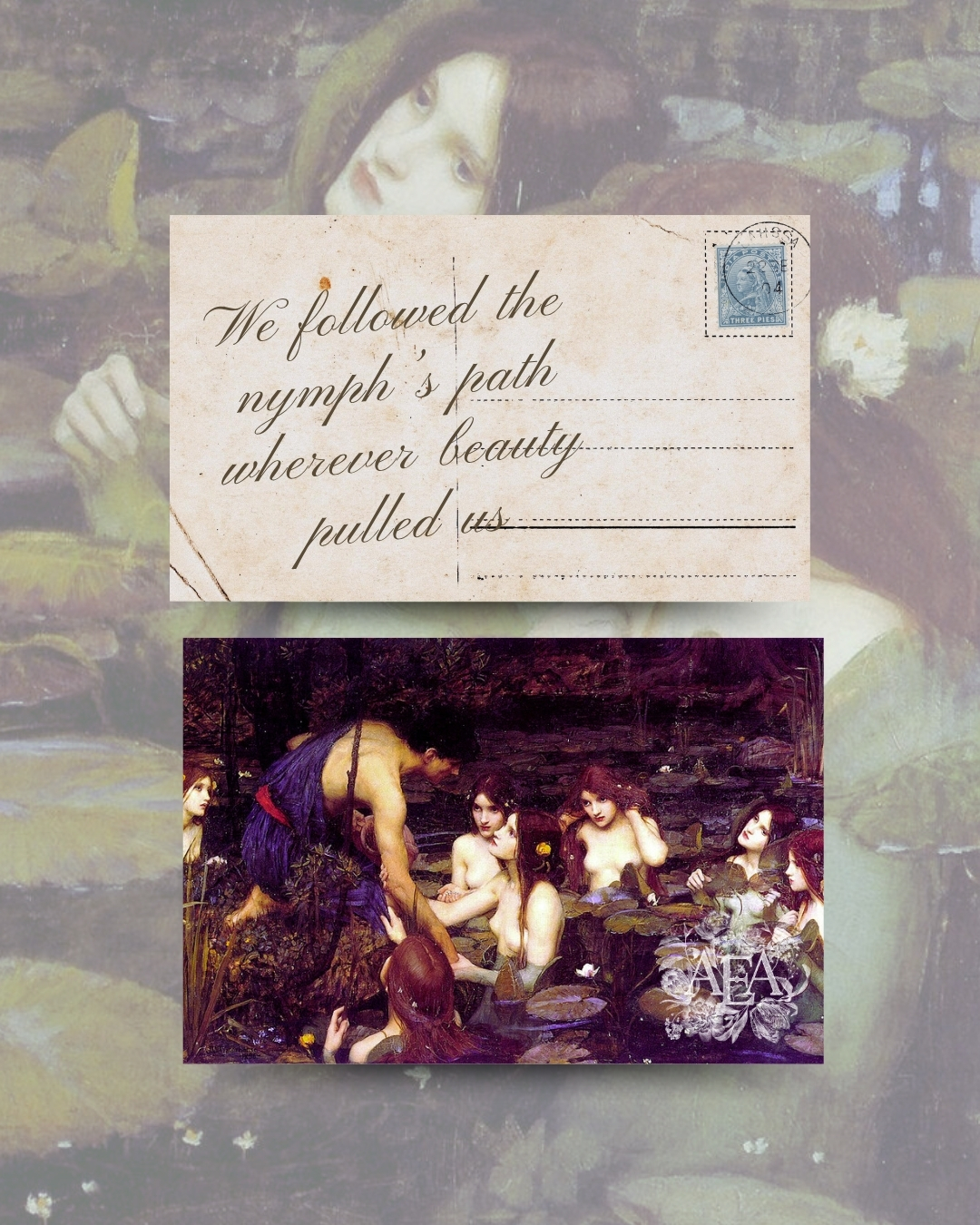
Uncovering Hylas and The Nymphs and An Invitation to Drown in Softness
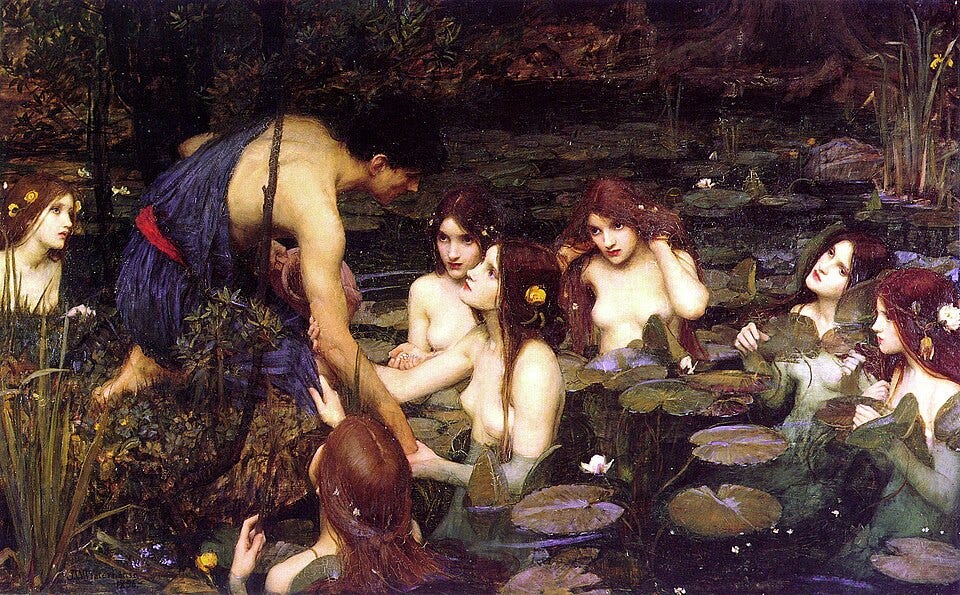
‘Hylas and the Nymphs’ (1896) by John William Waterhouse at Manchester Art Gallery
So, let us begin with the painting before us. At first glance, the scene in ‘Hylas and the Nymphs’ appears simple: a young man, Hylas, leaning over the mirrored surface of a secluded forest pool, held fast by the gaze of water-born maidens. Yet behind this single moment lies an ancient tale…..
In Greek mythology, Hylas was the beloved companion of Hercules, renowned for his youth and beauty. During the voyage of the Argonauts, he strayed into the woods to fetch water, stumbling upon a hidden spring. There, the nymphs, captivated by his radiance, lured him into their world beneath the water’s surface, never to return to mortal shores.
In John William Waterhouse’s hands, this myth becomes something far more than narrative illustration.
A late Pre-Raphaelite and a consummate storyteller with the brush, Waterhouse painted not merely bodies but atmospheres; moments suspended between heartbeat and breath, infused with longing and mystery.
The nymphs here, daughters of water and nature, are the very embodiment of liminality: poised between earth and divinity, the seen and the unseen. They are the breath of the pool itself; bodies flowing like liquid moonlight, crowned with moss and wild blooms, whispering of their ancient pact with the natural world. Their hands, pale and willowy, do not clutch but beckon, offering not violence but a tender invitation into the cool, yielding depths.
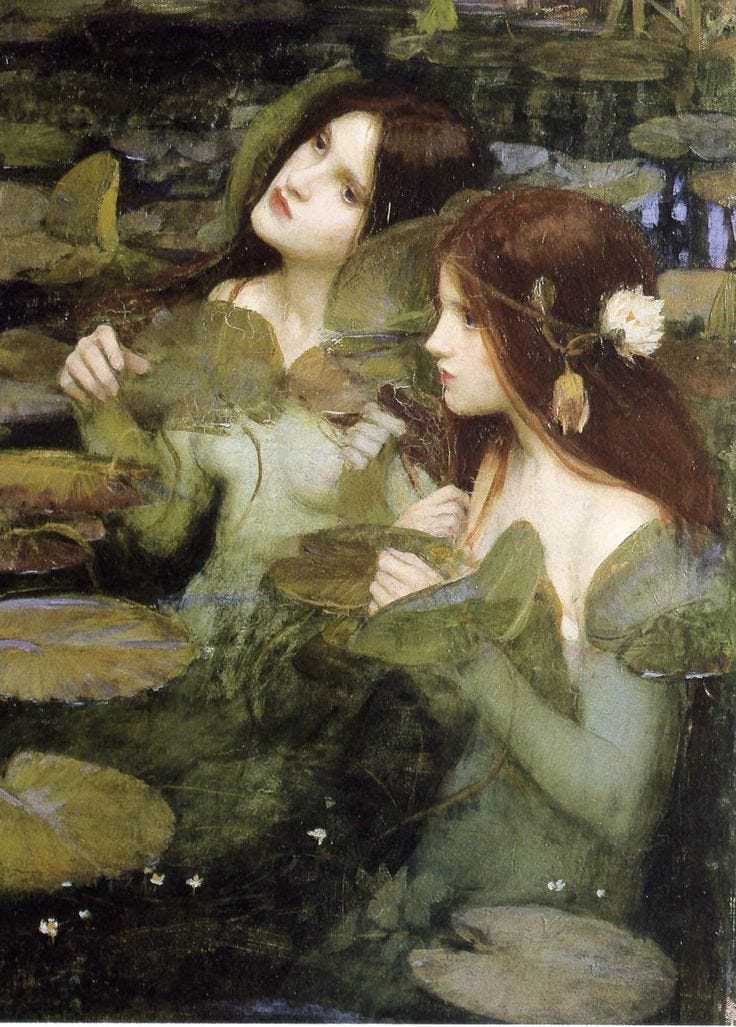
Waterhouse’s genius lay in his marriage of precise naturalism with dreamlike idealism.
Observe the pearly translucence of each nymph’s skin, the way their hair seems to ripple as if part of the water’s own current. Around them, the foliage dissolves into a soft tapestry of green and blue, blurring the line between forest and water, reality and dream. His palette, rich yet muted, creates a hushed atmosphere; an in-between space where myth breathes.
A devotee of the “art for art’s sake” philosophy of his time, Waterhouse held that beauty, emotion, and myth needed no moral or practical justification. His paintings are pure poetry, existing to awaken reverence for the unseen worlds that press like shadows against the edges of our everyday life.
In ‘Hylas and the Nymphs’, water is not merely a backdrop it is the central metaphor. Here water stands for transformation, for mystery and for the deep unconscious realms of the soul. Its blue-green surface mirrors the forest sky above, yet hints at the infinite world below. In ancient lore, water is the womb of rebirth, the veil between one life and the next, between the self we know and the self we have yet to become.
Now, look again at Hylas. His golden head catches the same dappled light that filters through the canopy, his body leaning forward in a posture that is both surrender and hesitation; a fragile tether to the world he is poised to leave behind. He is caught in the luminous pause before choice becomes fate. Around him, the nymphs are no predators; they are dreamers themselves, offering a union so complete it will dissolve his very name.
This is no simple abduction. It is a portrait to beauty’s spell, to the sacred art of letting go, to the eternal, intoxicating pull toward the unknown waters where self and world dissolve into one.
Nymphs vs Mermaids: Spirits of Earth and Water
Let us now linger a moment on the figures themselves. those enchanting nymphs, so different from the mermaids of folklore and popular imagination!
So what exactly is a Nymph?

A Nymph by Édouard Bisson (1901)
Nymphs are spirits deeply entwined with nature’s elements and places. For example, trees, rivers, mountains, and, here, springs and pools. They are embodiments of the life force of the natural world, ephemeral and eternal, wild yet tender. Nymphs are not bound to the sea alone but are guardians of specific landscapes. For example, they love freshwater sources like the sacred spring in this painting.
So….what’s the difference between a Nymph and a Mermaid?
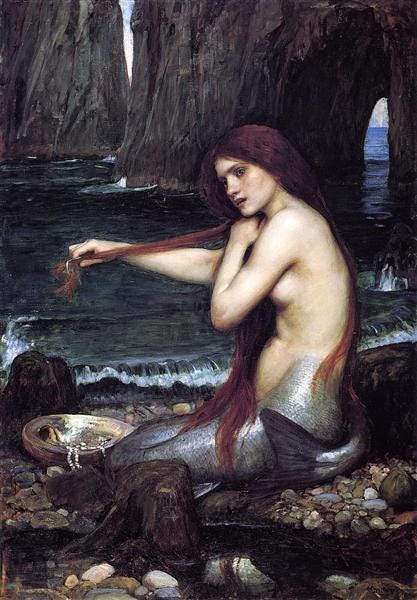
A Mermaid by John William Waterhouse (1900)
Mermaids, on the other hand, hail from the ocean’s vast, salt-water realm. They are creatures of the deep sea often depicted with fish tails and linked to themes of allure, danger, and the mysteries of the abyssal depths. While both nymphs and mermaids beckon mortals into the water, nymphs are more closely associated with innocence, fertility, and the quiet magic of hidden places on land, rather than the wild, untamed ocean.
To embody a nymph is to connect with the sacred pulse of the earth’s smaller, intimate waters: the springs, brooks, and pools that hold ancient secrets and softly nourish the soul.
So, are you ready to embody the spirit of the Nymph? Here’s some invitations for you enchanted one….
Invitations to Become the Nymph
Are you ready to imagine yourself as one of these water spirits; flowing effortlessly between worlds? Together let us become the breathless dancers of the hidden waters, where softness and strength entwine. Enchanted one, it’s time to meet your inner Nymph!

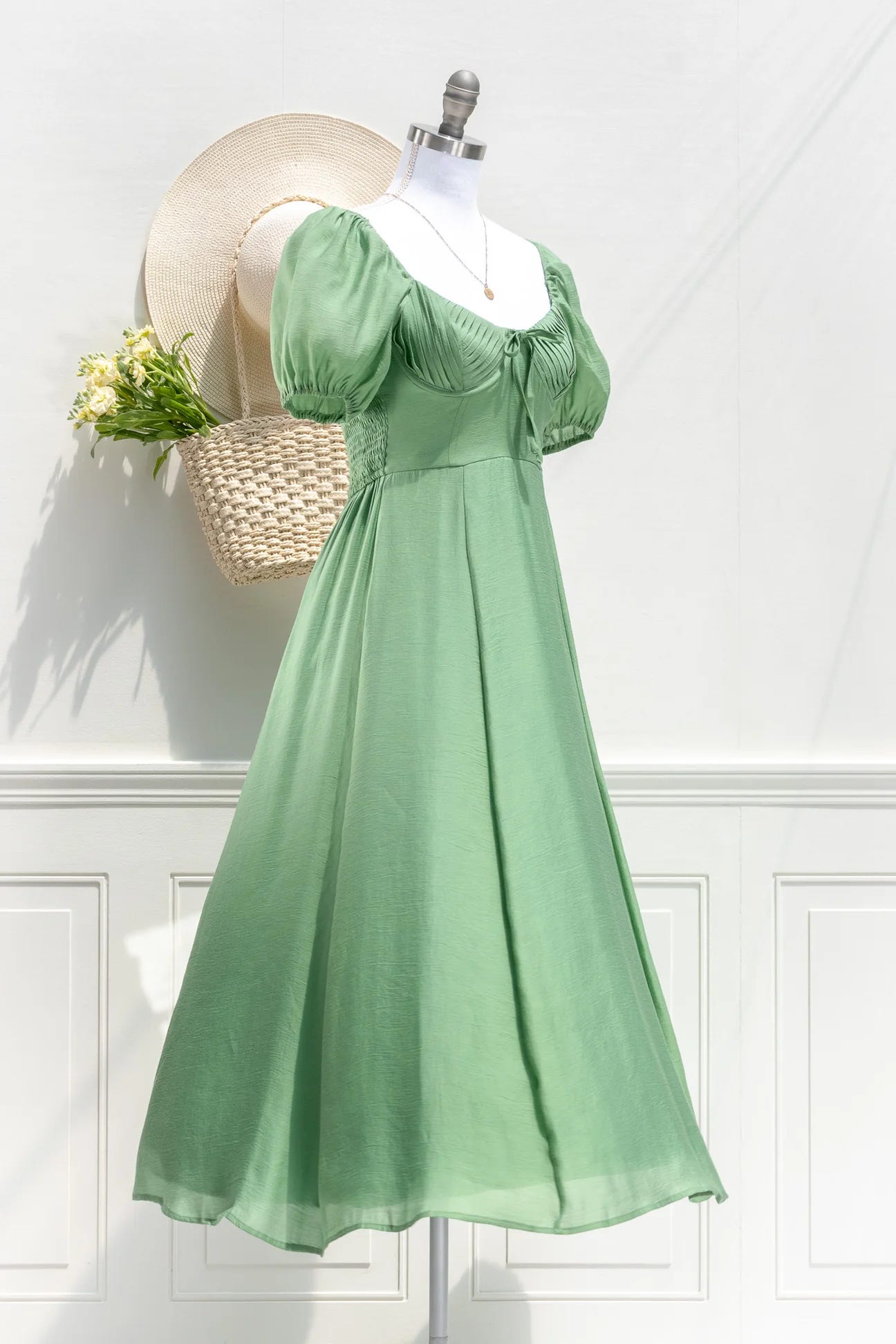
- Dress in Whispered Hues: Choose garments that flow like water. Think silks, chiffons, or linens in seafoam greens, pearl whites, and soft blues. I’m so in love with the Laureline dress from my favourite brand Amantine. Next, adorn your hair with fresh or dried wildflowers, tiny shells, or strands of silver thread that catch the light like water’s sparkle. For footwear, let yourself breathe and feel the Earth or water beneath you barefoot or in soft, strappy sandals so that you can ground to the wildness you wear.
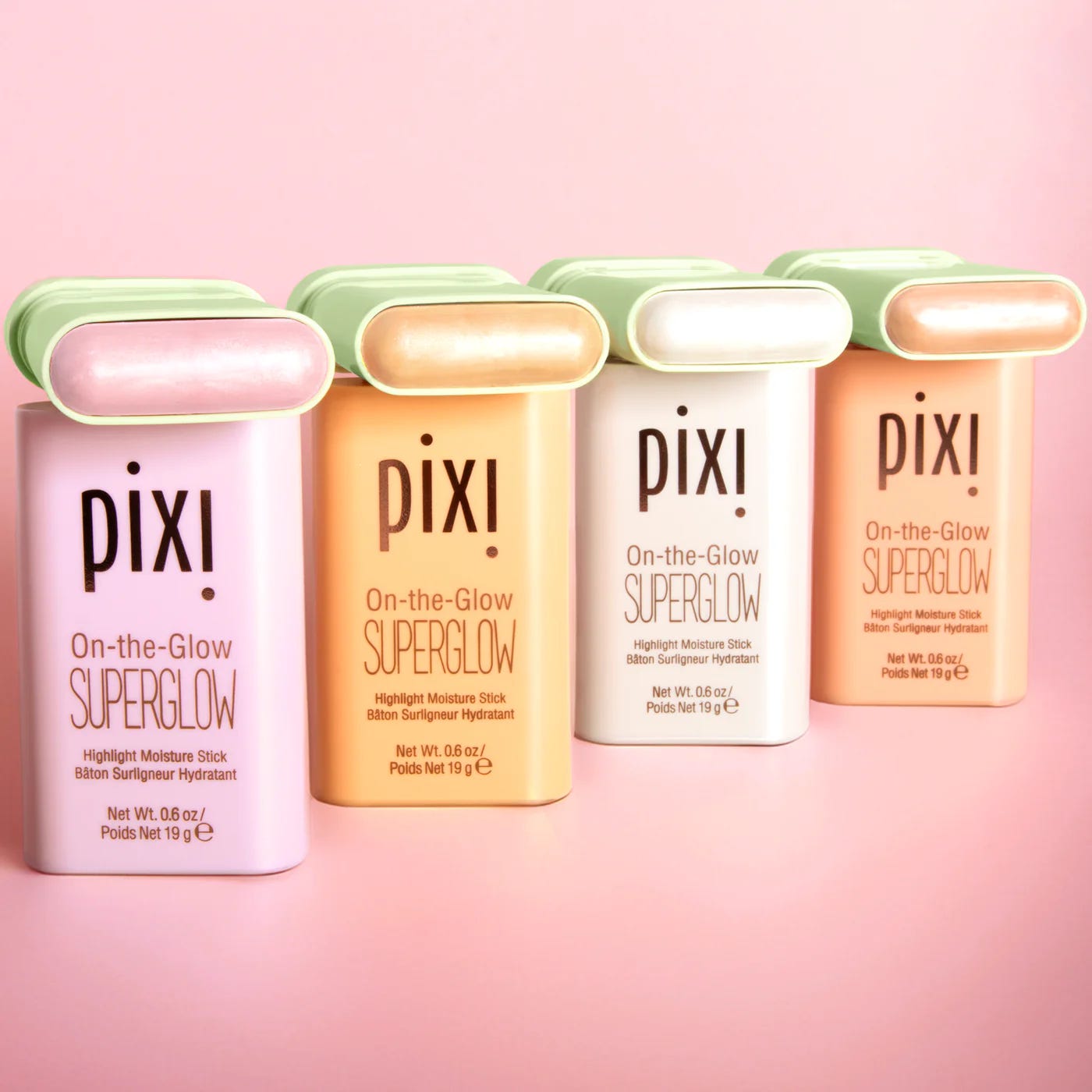
- The Makeup: Soft Luminescence of the Water Spirit: The nymph’s beauty is not bold but otherworldly. Imagine a glow that seems lit from within, like moonlight filtering through water. To get that Nymph Glow (oh hi SS26) start with a dewy, radiant base. Then, use a luminous primer and a sheer foundation or tinted moisturiser that lets your skin breathe and gleam like wet silk. For eyes wash them in sea-glass tones and a hint of shimmer with lashes softly defined. Then warm cheeks with a sun-kissed flush. To finish, tint lips with a sheer rose or peach, and finally, add a glimmer on cheekbones and collarbones, as if carrying sunlight on your skin! I’m head over heels in love with the Pixi On-The-Glow Superglow.
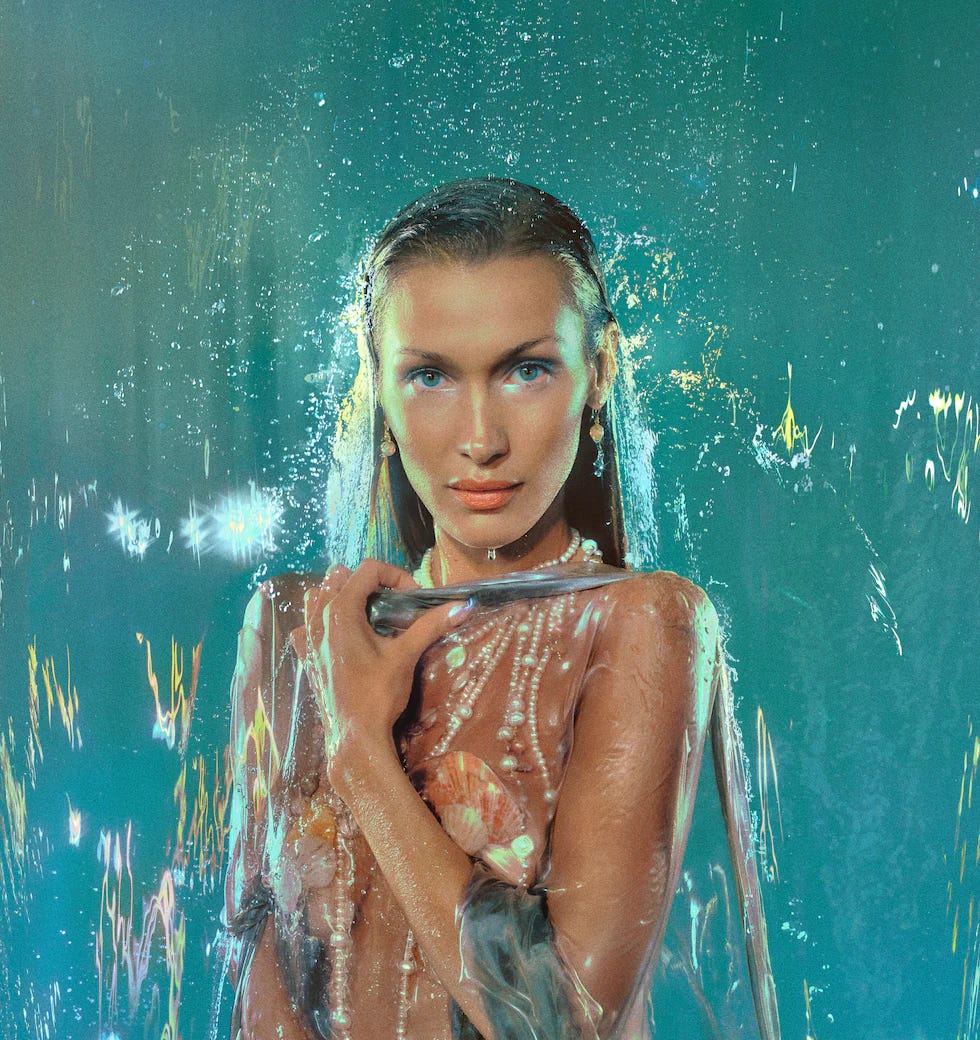

- Scent Your Spirit: Anoint yourself with fragrances evoking salt spray, jasmine, wet moss, and wild herbs. I adore Salted Muse by Orebella (no, I’m not sponsored by Orebella, I am just SO in love with this range that it keeps inspiring more posts!), which smells like a secret cove kissed by ocean breeze and moonlight. This for me is both Nymph and Mermaid in one bottle!
- Create a Sacred Pool: Find or create a small space in your home or garden that becomes your sanctuary filled with water bowls, crystals, soft candles, and natural objects. Sit with a journal beside you and listen to the whispered stories that arise.
- Move Like Water: Practice gentle, flowing movements or dance slowly to music that feels like rippling streams or ocean tides. Imagine your body dissolving the rigid boundaries of land, becoming liquid light. I’m taking weekly Tai-Chi classes in a heated pool and it is the most ethereal thing my body craved.
- Write from the Depths: Use these prompts to unlock your inner myth (if you’re not into journalling try pulling an oracle card instead):
- Where do the secret waters of your soul flow?
- What parts of yourself long to be drawn beneath the surface, to be seen and transformed?
- What would it mean to surrender, like Hylas, to the unknown with trust and tenderness?
More Nymphs of Victorian & Pre-Raphaelite Art: Whispers of Myth in Paint
Beyond Waterhouse’s ‘Hylas and The Nymphs’, the late-Victorian and Pre-Raphaelite movements overflowed with tender visions of nymphs, spirits of forest, stream, and shore, each painter offering their own hymn to nature's mystic children. Let’s look at some of these examples together….
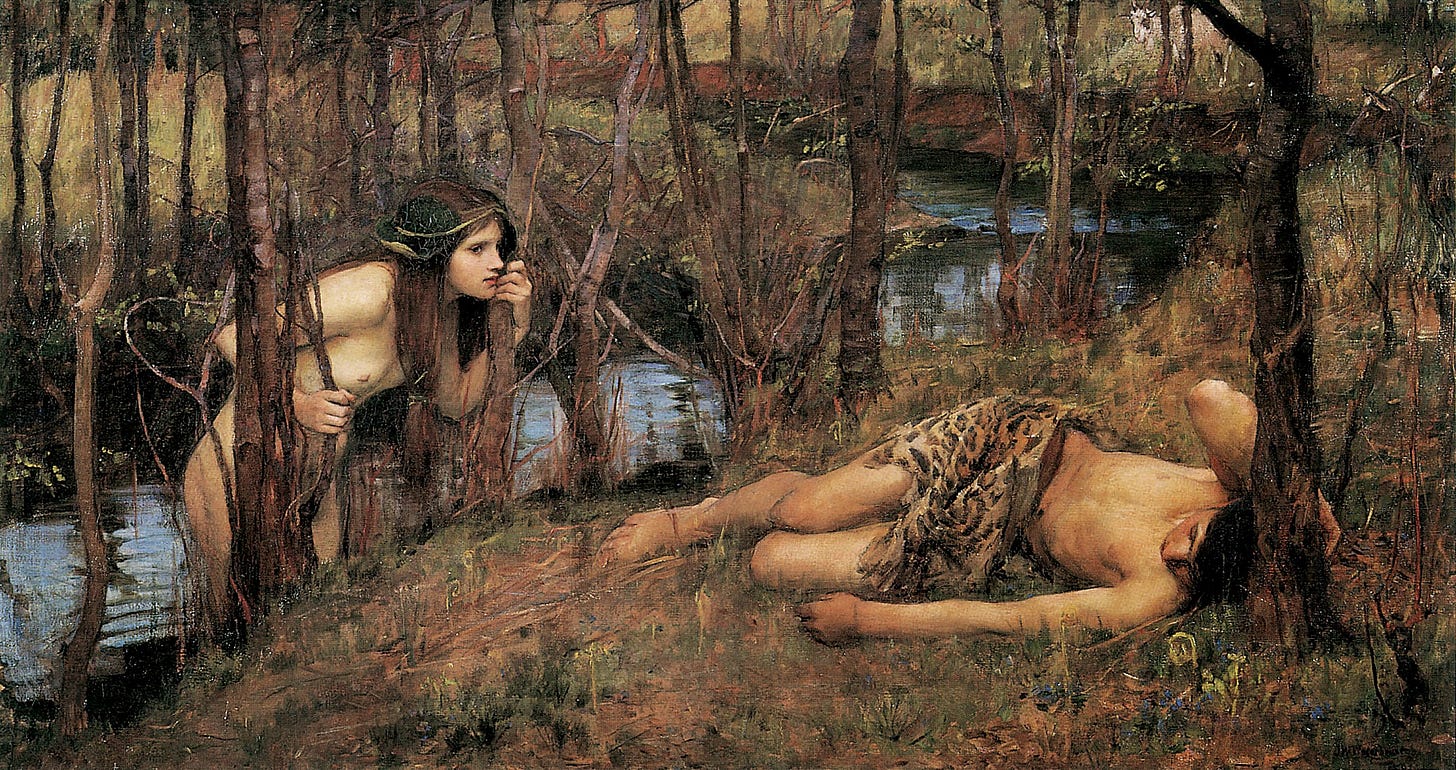
A Naiad & A Hamadryad by John William Waterhouse (1890)
Earlier in the 1890s, Waterhouse also explored the “lower pagan gods,” portraying the liminal spirits of springs (A Naiad) and trees (A Hamadryad) with equal parts reverence and ambiguity. These images, echoing Hylas, reveal his fascination with female autonomy and nature’s deeply rooted magic.

Crenaia, the Nymph of the Dargle by Frederic Leighton (1880)
Here Leighton brings to life an Irish river spirit with a coy, almost self-aware grace. Draped in creamy drapery by a falling stream, she is the very embodiment of liminal beauty; the threshold between solid land and living water.
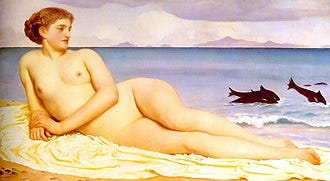
Actaea, the Nymph of the Shore by Frederick Leighton (1868)
Here a Nereid rests at the water’s edge, her gaze cool and distant while dolphins frolic near; an image of poised serenity, where myth meets marine calm, and mythic femininity finds sanctuary in salt-touched solitude.

Telemachus and the Nymphs of Calypso by Angelica Kauffman (1782)
‘Telemachus and the Nymphs of Calypso’ (1782) by Swiss artist Angelica Kauffman shows the young hero surrounded by Calypso’s gentle water-born companions. Bathed in golden light and draped in airy folds, the nymphs appear not as seductresses but as serene guardians, embodying the neoclassical ideal of harmony between nature, myth, and human longing.

A Woodland Nymph by Philip Hermogenes Calderon (1883)
In a misty glade, Calderon’s nymph brushes aside classical decorum with everything her form natural, her gaze introspective. A whispered reflection of Keats’ poetry, her presence blurs the line between mythic ideal and genuine human yearning.
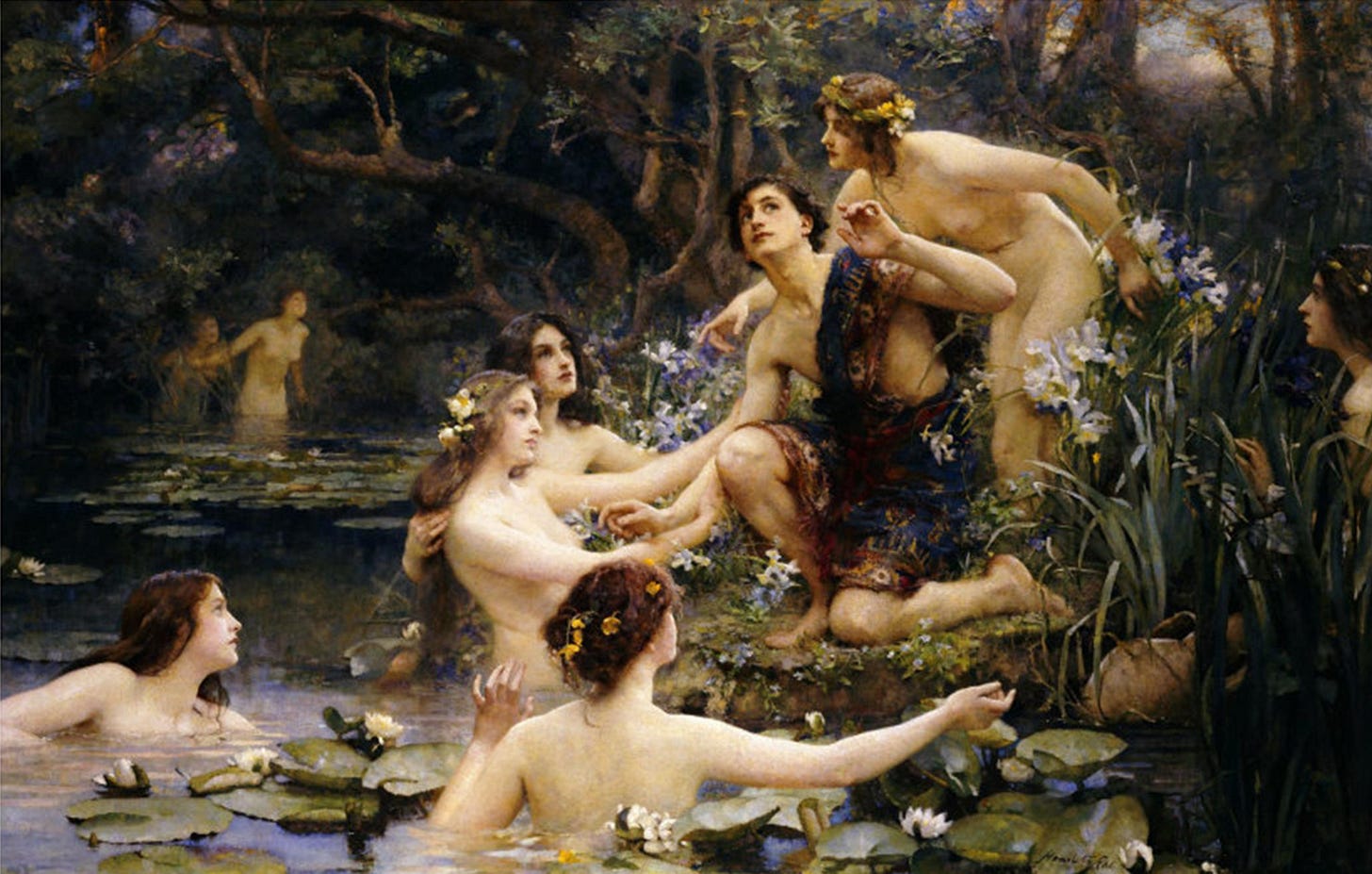
Hylas and the Water Nymphs by Henrietta Rae’s (1909)
One of my absolute favourite artists of all time, and a peer to Waterhouse, Rae reimagines the myth through a softer lens, preserving the seductive pull of the nymphs while infusing the scene with Victorian empathy and subtle narrative nuance.

‘The Dance Of The Nymphs’ by Édouard Bisson - (date unknown)
Painted around the turn of the 20th century by French artist Édouard Bisson (1856–1939), The Dance of the Nymphs radiates a gentle luminosity that drifts across its pastel sky. Here, a chorus of nymphs dances weightlessly amid ethereal clouds and soft light with their flowing gowns and graceful movements capturing the timeless elegance of myth.
Do you have any other paintings of Nymphs you adore? Please let me know enchanted one!
The Hylas and the Nymphs: Whispers Beneath the Water Playlist
As with all my posts, I believe music can be an extra act of embodiment. And so, step into the painted waters of John William Waterhouse’s ‘Hylas and the Nymphs’ and let music be the current that carries you there.
This playlist on Spotify a collection for dreamers, wanderers, and those who long for the slow pull of beauty with each song a ripple of mystery, salt, and silk.
Beginning with Vanessa Carlton’s ‘Blue Pool’ (because whenever I hear this song I imagine Waterhouse’s painting come to life to be the music video!), the soundtrack drifts through shimmering strings, whispered folk tales, and sun-dappled harmonies until you feel the lilies brushing your skin and the nymphs’ gaze upon you.
Best listened to in the drowsy heat of afternoon, with tea cooling in the grass beside you, or in the quiet of night when the world is hushed and the water calls.
Books to Swim Into

Dive deeper into the realm of nymphs and watery myths with these treasures:
- Mythology by Edith Hamilton is the classic source for the stories of nymphs and gods
- Women Who Run With the Wolves by Clarissa Pinkola Estés is the ultimate guide for exploring feminine archetypes, including the wild and sacred feminine connected to nature’s rhythms
- The Mabinogion, is a magical piece featuring tales of magic and water spirits from Welsh mythology
- Finally, I recommend selections from Keats’ Endymion and Plath’s The Colossus, where water and myth entwine


Thank you, my dear kindred Earthy magical and enchanting spirits, for stepping into these waters with me.
May you carry a little of their glimmer back into your days, walking softly through the world with a Nymph’s knowing smile and a heart attuned to the music beneath the surface.
Before I leave you in this Nymph like state, perhaps, after all, the true enchantment of ‘Hylas and the Nymphs’ is not only in Waterhouse’s brushstrokes, nor in the myth whispered through the water’s shimmer, but in the way it beckons us to remember our own spellcraft.
Waterhouse’s masterpiece invites us to slip quietly out of the everyday and into a world where beauty is enough, where mystery is holy and where longing can be savoured rather than solved.
The Nymphs do not rush, they do not explain, they simply exist from their luminous presence unafraid of their own allure. And so may we.
Whether it is in the swish of a silk skirt, the reading of a myth beneath a willow tree, the scent of salted musk on bare skin, or the dreamy strains of a song that carries you away…..you can step into the water too!
Now I would love to hear from you, my fellow nymphs and muses. Which thread of this myth calls to you most? Which painting or song would you dive into if you could live inside it for a day?
With love and enchantment,
Georgie xoxo

Take Me To The Lakes Retreat - Lake District, England
If your heart is still rippling with the call of the water, if you feel the nymph within you stirring and wishing to wander farther, then perhaps you will follow her to the lakes.
Take Me to the Lakes is a retreat for those who long to live inside the poem with days steeped in still water, wild skies, and the kind of beauty that asks for nothing but your presence. It is a place for soft mornings by the shore, for reading and dreaming and drifting, for listening to the hush of the reeds as they tell you their secrets.
Come and let the lake become your mirror, your muse, your spell. Let us live, for a while, as the nymphs do: half in the dream, half in the water!
Click here to enter the Lakes with me
Categories: : Cabinet Of Enchantments
 Georgie
Georgie 